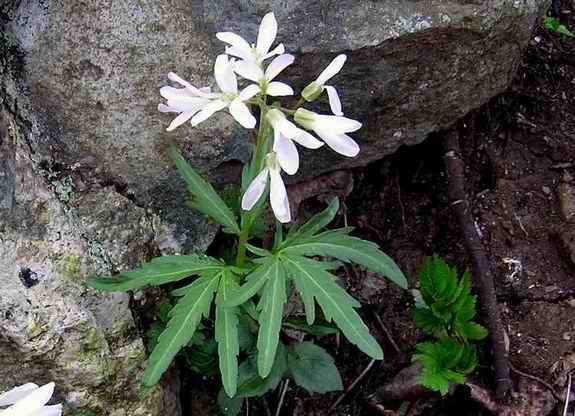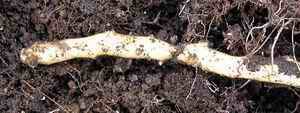|
Return to Hiker's Notebook Homepage
Common Name: Cut-leaved Toothwort, Pepper root, Lady's smocks, Crinkleroot, Milkmaids, Pepperwort, Toothache root Scientific Name: Cardamine concatenata (formerly Dentaria laciniata). The genus is from the Greek kardamon meaning cress, as this general name was given to any edible plant with piquant foliage. The species is from the Latin concatenatus which means joined together, or concatenated, and is reference to the segmented root. The name toothwort refers to the erstwhile use of the roots of the plant as a treatment for a toothache. The suffix wort derives from the Old English wyrt which meant herb or root and came to be applied to any medicinal plant. The doctrine of signatures is responsible for the prefix; the segmented ivory colored rhizome has tooth-like knobs on it to suggest its use to treat dental distress. The doctrine of signatures, popularized in the 16th Century by a professor at the University of Basel known as Paracelsus, was based on the proposition that plants were put on earth by God who left clues in their appearance as to their use.
The name pepper root is a colloquial mnemonic name to identify the plant as the source of a choice edible, the pungent root. They can be eaten raw on the trail, chopped and mixed with vinegar to make a horseradish flavored condiment, or added as chopped root segments for a pungent salad ingredient. Native Americans used the root to treat colds and as a poultice for headaches. A tea was made from the root to treat hoarseness.
|

